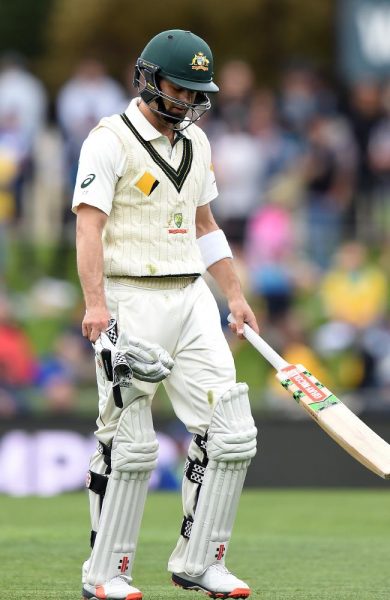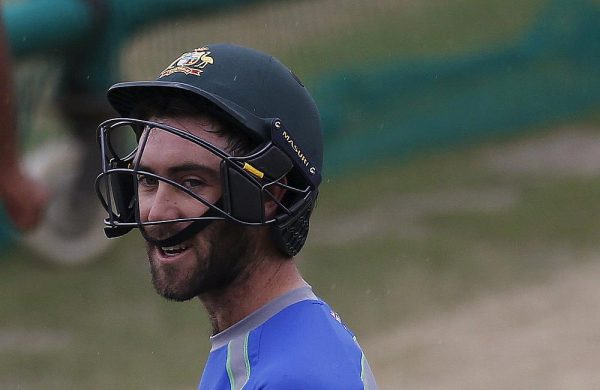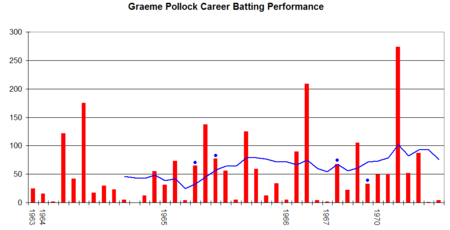
A gradual but inevitable descent into cricket-based loathing and bile.
Whatever Happened To The Unlikely Lads (International Edition)? #63: Adam Voges
The standard operating procedure for this series of articles is to choose a cricketer who initially promised the world, yet went on to fail harder than an Icelandic banker on the international stage, players like Mark Ramprakash for instance. It would therefore seem curious to pick a player who finished his international career (and yes, his international career is very much finished) averaging 45.7 in ODI cricket and 61.8 in Tests. Clearly this is a very strange player we are talking about. Indeed there was nothing straightforward about the career of
#63: Adam Charles Voges
Voges, it could be argued, belongs to a particularly hard-bitten generation of Australian batsman, amongst whom were the likes of Michael Hussey, David Hussey, Brad Hodge, Chris Rodgers and Michael Klinger. Voges wasn’t necessarily any better than any of these, and probably much worse than quite a few, if not all, of them. Yet he had one characteristic that some of them, in particular David Hussey and Klinger, lacked: the ability to peak at the right time. In early 2015, as Australia were flailing around looking for a solid middle order batsman, Voges was scoring 1,358 runs in Shield cricket, at an average of 104. Klinger, too, was scoring runs for fun, but his peak had come too late, whereas when David Hussey’s time seemed to have come, in 2012, his form disappeared as quickly as a Callum Ferguson Test innings.

Which were so brief that they now have led to a new unit of time, simply known as ‘the Ferguson’.
The same goes for his ODI career. He was in and out of the Australian one day side over a number of years but always was able to force his way back in through sheer weight of domestic runs, averaging 44 in both seasons before his recalls in 2009 and 2013. His ODI career was also where the first murmurings against Voges were heard. Despite being a solid middle order batsman, the accusation was that his average was being artificially inflated by the high number of not outs he accrued, 9 in 28 innings. Thus, so the argument went, he wasn’t anywhere near as good as his average of near 50 suggested. It was a line of reasoning that would haunt Voges later in his career; that his numbers actually were not a fair reflection of his (limited) ability.
In the end, Voges was dumped from the Australian ODI setup in late 2013 in order to make room for Glenn Maxwell. Who was later, in turn, dumped to make room for anyone who wasn’t Glenn Maxwell. It was a highly unceremonious departure for a player who had done very little wrong, but a spot had to be found for an up and coming young talent and clearly an older head needed to be sacrificed as a result. This was also a line of reasoning Voges would encounter again.

Everything is always Maxwell’s fault. Always.
Which brings us to his Test career, which is the most bizarre tale of all. His debut seemed, for Australia, to be a blessing from the Gods. On a rank West Indian turner, on which no other Australian batsman scored more than 39 (and that was number 11 Josh Hazelwood), Voges amassed 130 not out. It was an exceptional innings, one which helped Australia to an innings victory and seemed to promise that their middle order woes were finally over. Australia had found their new Michael Hussey. Of course, it didn’t work out that way at all.
A side effect of both Australia’s and England’s obsession with the Ashes is that reputations are largely forged by them. And Voges had a poor Ashes. He didn’t have a horrendous Ashes like, say, Michael Clarke’s, but a series average of 28 was not what was expected at all from Australia’s new middle order hero, the batsman who would save them from the sort of hilarious batting collapses that had stalked them in the recent past. When Voges failed in the first innings at Edgbaston and Trent Bridge, the writing was already on the wall. It was now just a matter of when, not if, he’d be punted from the Test side to make way for a younger face.

Zany modern haircut? Inability to grow facial hair yet? Questionable cricketing ability? Get him in the side!
It’s indicative of just how obsessed Australia are with the Ashes that nothing that would follow – the double centuries, the Test average of over 100 – would come even remotely close to erasing memory of those failures in England. His subsequent runs (and there were a lot of them) seemed to be made in spite of those failures, not to absolve them. Voges knew himself (as did pretty much everyone else), that there was no removing the black mark against his name. And so it proved: a poor series in Sri Lanka, followed by a few failures in a row against South Africa, and he was gone.
The rhetoric around the Australian team now is that introducing younger players was a change that had to be made, the only possible recourse to reviving a failing setup. And you can’t argue with the results so far. But in doing so a player who averaged 61 in Test cricket has not so much been disposed of, but is now almost universally regarded as having been rubbish all along, little more than a weight around the team’s neck. It’s bizarre really, when you think about it. A player with his record would have been regarded as one of the game’s greats in years past. Graeme Pollock, for instance, averaged 60.97 from 41 Test innings and is regarded as on the game’s true greats. Voges averaged 61 from 31 innings, and is regarded as utter crap. We’re not arguing Voges was as good as Pollock (we have no idea, having never seen Pollock play), but it’s interesting how vastly different reputations can be between two, statistically, very similar careers.

Couple of big innings + lots of lean patches inbetween = over-rated.
Of course, the West Indian side Voges made most of his runs against was rubbish, but it would be a mistake to dismiss the quality of his debut century, or that he averaged 99 against a New Zealand attack that was, at the time, considered one of the world’s best. We’re not arguing Voges faced down some of the best bowlers the game has ever seen, but if batting was so easy against them, why did nobody else score nearly as many runs as he did? In seven Tests against New Zealand, both home and away, Joe Root averages just 39. Clearly assessing Voges’ career is not as straight forward as it might seem.
As for the man himself, well, he, perhaps unsurprisingly, looks broken by the experience. To watch him turn out for the Perth Scorchers this season, you wouldn’t think you were watching a player named in the latest ICC Test XI. He looks, frankly, rubbish, and it was particularly funny/sad watching him in his most recent game try to slog sweep a spinner, fall out of his crease, and pull his hamstring, all at the same time. It was the sort of performance you’d expect from a player who knew his professional career was effectively over. And although he has subsequently signed with Middlesex, you do have to wonder what the motivation to continue is for a player who has already discovered that nothing he could do could ever possibly satisfy his doubters.

No Comments
Post a Comment